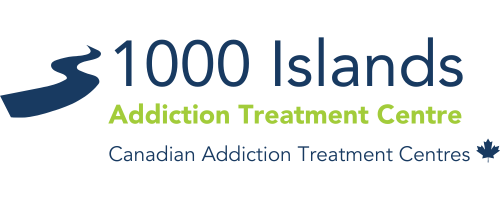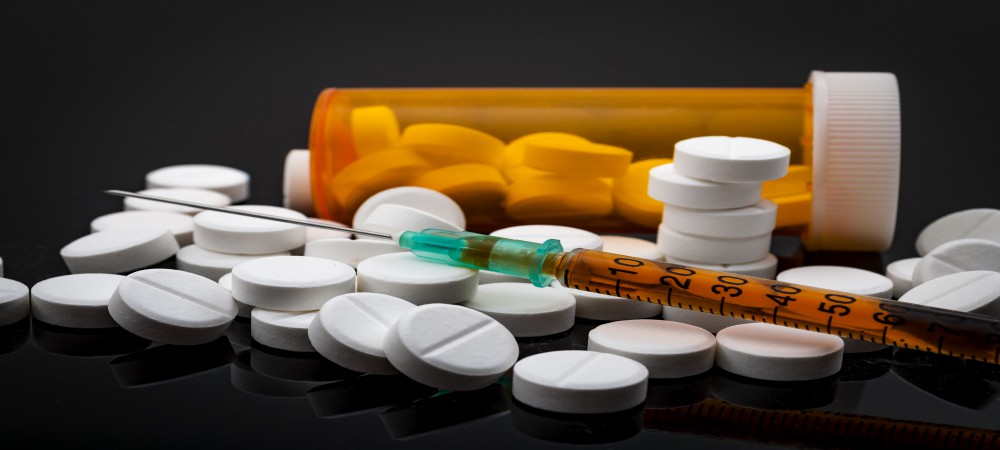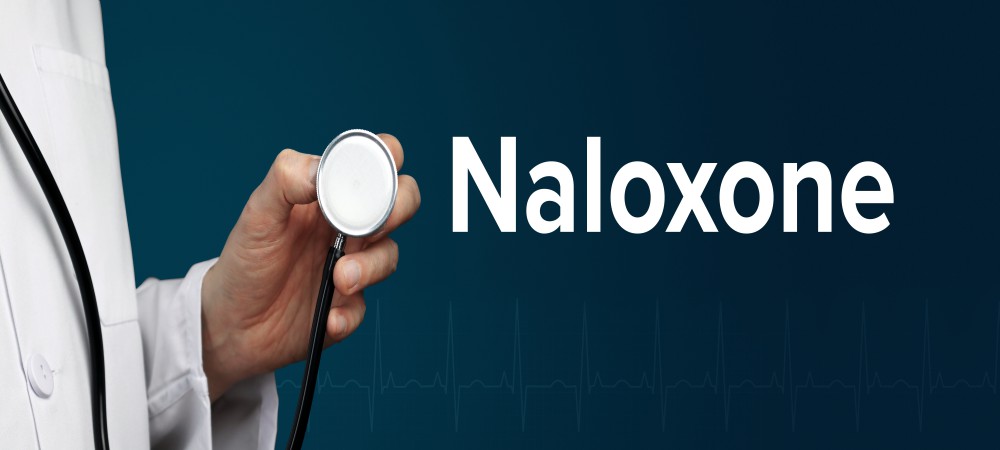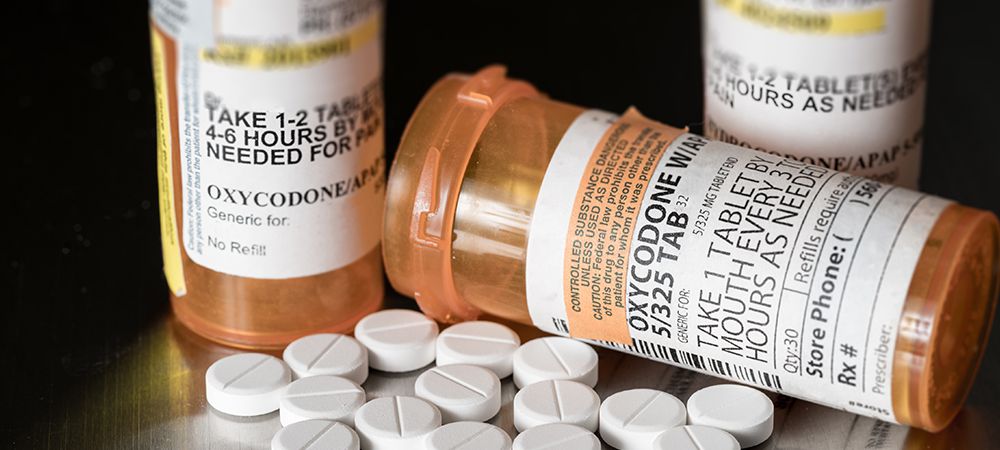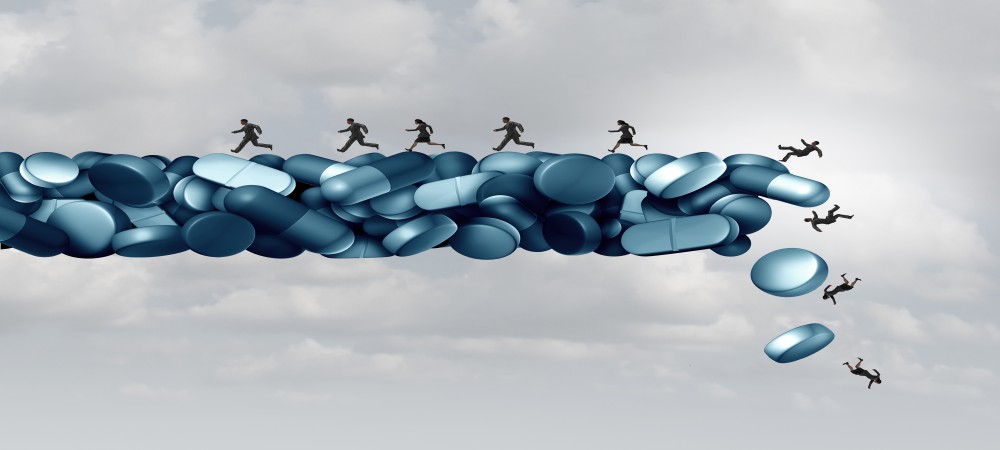
What is Medication-Assisted Treatment for Opioid Addiction?
In addition to behavioural therapy, the use of medications like methadone can help to treat opioid addiction. Medication-assisted treatment for opioid addiction is a cost-effective method of treating opioid dependence. The medications help to reduce severe withdrawal symptoms making it the best treatment for opioid addiction. Also, incorporating medications into opioid addiction fosters recovery and reduces the risk of relapse.
There are several misconceptions about using medications to treat opioid addiction. Contrary to the myths, using medications isn’t the same as substituting one addictive drug for the other. Rather, you can liken it to using medications to control a particular ailment. In this article, we will debunk some misconceptions surrounding medication-assisted treatment for opioid addiction.
Want to know how medication helps with opioid addiction? This article discusses the types of medications used in medication-assisted treatment for opioid addiction. Here, we will answer all your questions on medicated-assisted treatment for opiates abuse.
What is Medication-Assisted Addiction Treatment?
Medication-Assisted Treatment for opioid addiction can also be known as MAT or MATOD. It is using drugs like naltrexone, methadone or buprenorphine to treat opioid addiction.
Not only do these medications treat opioid addiction, but they also help in maintaining the results. Because opioid addiction affects the patients’ brains, sudden withdrawal can be life-threatening.
Furthermore, what medication-assisted treatment for opioid addiction does is that it helps to normalize the brain’s chemistry. Also, the medications block the euphoria patients get from using opioids and normalize their body functions.
You can use naltrexone, methadone or buprenorphine for several years or a lifetime. However, should you decide to discontinue the use of the medications, consult your doctor first.
How Medicated Assisted Addiction Treatment for Opioid Addiction Works
According to an NCBI report, people who are addicted to opioids are likely to relapse after detoxification if they decide to abstain from opioids. Although relapsing is part of recovery, it can also be dangerous especially when the patient overdoses on opioids.
Substituting opioids for buprenorphine or naltrexone can help in the reduction of withdrawal symptoms. For instance, naltrexone works by hindering the opioid receptors from activating.
While naltrexone can be referred to as an opioid antagonist, buprenorphine is a partial opioid agonist. Presently, these are the only recommended medications used in combating opioid addiction. Although naltrexone, methadone and buprenorphine work in reducing withdrawal symptoms, they have different functions. Also, they are administered in different ways.
Furthermore, for severe withdrawal symptoms, buprenorphine is the best treatment for opioid addiction. While methadone is used to detoxify patients from opioids that last long like morphine. Finally, with diseases like diabetes, respiratory deficiency or head injuries should be given these medications with caution.
Also, we don’t underemphasize the importance of counselling. The reason is, patients who don’t undergo therapy have higher risks of relapse. While medications assisted treatment can help with opioid addiction, it works hand in hand with therapy.
Types of Medications Used in Medication Addiction Treatment
Medication-assisted treatment for opioid addiction surrounds three major medications. They are naltrexone, buprenorphine and methadone.
In choosing the right medication, there are specific regulations and supply chains that should be considered. These drugs affect patients in different ways hence their varied recovery rate.
Buprenorphine
The combination of buprenorphine and buprenorphine-naloxone has been used to treat patients with opioid addiction. Unlike methadone, buprenorphine is more accessible and has a reduced chance of further abuse.
Also, compared to other medications for opioid addiction, buprenorphine has better side effects. This medication is characterized by its high receptor affinity that means its effects last longer.
Furthermore, buprenorphine is a partial opioid agonist. After taking buprenorphine, you will start to experience milder withdrawal symptoms. Also, the administration of buprenorphine prevents other stronger opiates from having an effect on your brain.
Buprenorphine is recommended for patients with mild opioid addiction withdrawal. Hence, it’s less effective when used for strong opiates like heroin.
Patients are to avoid using respiratory depressants in combination with buprenorphine. Since buprenorphine has a reduced risk of dependence, it is safe to use for HIV or AIDS opioid users.
Also, buprenorphine, unlike methadone, can be dispensed or prescribed in the doctor’s office.
The process of stopping the use of buprenorphine is referred to as tapering. Only a doctor or addiction expert is allowed to assist the patient during this process.
Naloxone
Naloxone works by blocking the euphoria accompanied by taking cosine, morphine or heroin. Not only does Naloxone block opioid receptors in the brain, but it also binds them. Unlike methadone and buprenorphine, naloxone does not activate the opioid receptors. One advantage of Naloxone is that it is non-addictive.
Naloxone can reverse and prevent the effects of an opioid in case of relapse or overdose. It does this by quickly detoxifying the body of the opioid. Also, in the space of 2 minutes, Naloxone can quickly stop respiratory depression that is induced by morphine.
Naloxone has few side effects and is considered safe to use as medication-assisted treatment for opioid addiction. Also, the availability of Naloxone has reduced death from opioid overdose to 40%. For opioid addiction, Naloxone is administered as an extended-release intramuscular injectable. It can only be administered by a licensed medical practitioner.
Typically, Naloxone will be given to you once in four weeks by a medical practitioner. One benefit of this medication is that it doesn’t cause any withdrawal symptoms when you abstain from it. With Naloxone, there’s no risk of diversion of potential. However, patients below 18 aren’t allowed to use Naloxone as medication-assisted treatment for opioid addiction.
There’s a word of warning that comes with using Naloxone. If you stop using it, you will have a reduced tolerance for opioids. This means there’s a risk of overdose with a relapse. Taking the same amount you used to consume can have fatal consequences.
In addition to this, you must abstain from consuming other opioids or alcohol while on Naloxone treatment. The same goes for sedatives, and tranquilisers. If you’re going to be taking other medication with Naloxone, it’s important to inform your doctors.
Conclusively, the use of naloxone can last several months or years. It all depends on how effective the medication is for your unique condition. Also, as long as recovery is stable, there is no need for patients to taper off naloxone.
Methadone
Methadone isn’t a new medication for opioid addiction as it’s been in use since 1964. It’s a long-lasting opioid that works by binding opioid receptors present in the spinal cord and the brain.
It activates them while reducing the cravings and withdrawal symptoms caused by the opioid. Also, methadone reduces the high feeling that accompanies the use of opioids.
Furthermore, methadone medication-assisted treatment for opioid addiction is safe, effective and efficient. It is administered once a day but only through a licensed opioid treatment program. Also, more than half of opioid addicts are under maintenance treatment with over 60% of them receiving methadone. Under the maintenance treatment using methadone, there has been a decrease in the abuse use of opiates.
The result is reductions in problems associated with opioid use such as crime and intravenous drug use. Methadone treatment helps in normalizing how opioid addicts’ immune systems function. It also alters how they respond to stress.
Additionally, methadone helps patients perform well in difficult cognitive tasks. Just like buprenorphine, methadone is highly effective. However, the use of methadone can restrict the hormones that release gonadotropin. According to an NCBI journal, this can cause a decrease in testosterone levels.
In conclusion, methadone can prolong polymorphic ventricular tachycardia or QT. Opioid patients who are experiencing prolonged QT are to switch to another treatment that has buprenorphine. The reason is buprenorphine doesn’t have any effect on QT. Purified methadone otherwise known as Levomethadone can be used as an alternative treatment.
Related Article: The Timeline for Opioid Addiction Treatment
Advantages of Medication Assisted Treatment for Opioid Addiction
One advantage of medication for opioid addiction is that it reduces withdrawal symptoms. It is more like weaning the patient off opioids rather than cutting it off completely. Also, medications can help you complete the detoxification process quickly and easily.
However, each medication has its advantages which may differ from the rest. Here are the advantages of the different drugs used in medication-assisted treatment for opioid addiction.
Advantages of methadone
- It gives a better chance of complete recovery from opioid addiction
- It allows patients to focus more on addiction treatment seeing as they don’t have to worry about withdrawal symptoms.
- It makes stability during early recovery stability a possibility.
- It improves the patient’s quality of life.
- It decreases the outbreak of infectious diseases.
Advantages of buprenorphine
- It helps in ameliorating the severity of withdrawal symptoms.
- It is cost-effective.
- The possibility of respiratory depression is low compared to methadone.
- The overdose potential of buprenorphine is low.
Advantages of naloxone
- It doesn’t cause dependency or tolerance
- It has reduced the risks of complications.
- Its accessibility has reduced the rate of fatal overdoses.
Medication-Assisted Treatment Misconceptions
It’s normal for people to know the wrong things about what medication-assisted treatment is. This is due to many misconceptions in the media about the treatment method. In many ways, the misconceptions about medication-assisted treatment for opioid addiction have overshadowed its benefits.
Myth 1- People who use medication-assisted treatment are weak and lack discipline.
Addiction stems from the misuse or abuse of opioids which isn’t the best decision. However, addiction changes the brain and causes real pain. Although quitting opioid use on your own is possible, it’s dangerous. Many patients undergo several phases of relapse and recovery which can be life-threatening.
Furthermore, the process of recovery is easier especially when the patient receives medication-assisted treatment. This treatment method is safer compared to opioid abstinence without assistance. Also, it has prevented deaths from dangerous practices associated with opioid use and overdose.
Myth 2- Medication-assisted treatment isn’t the right moral choice.
The different perception of opioid addiction is responsible for the negative stigma of medication-assisted treatment. Typically, addiction is a result of repeated use of certain drugs alongside other environmental and genetic factors. Also, it leads to changes in the opioid receptors that are present in the brain.
Owing to this, it’s only right that addiction is perceived as a medical disease that should be treated medically. Just like other diseases, addiction should be treated with the use of medication.
On the other hand, people also view addiction as a spiritual or moral problem. This perception views patients who decide to use medication-assisted treatment for opioid addiction as weak. The reason is patients are still going to be using another “drug” consistently.
Myth 3- Medication-assisted treatment is substituting one addiction for the other.
Many patients don’t understand why doctors are administering opioids to them when they have an opioid addiction. Medications like methadone and buprenorphine are opioids and they are also used in treating opioid addiction. However, it’s wrong to conclude that these medications are another addiction.
In fact, there are other non-opioid options for patients who don’t want opioid medications. A typical example of a non-opioid medication is naltrexone. It is equally as effective as methadone and buprenorphine.
Myth 4- Because the medication-assisted treatment doesn’t end drug addiction immediately, it’s not effective
Medication-assisted treatment for opioid addiction is not a cure. It helps to know that addiction is the same as a severe disease. Like other chronic diseases, the medications given to manage them aren’t regarded as the cure. For instance, people with diabetes are given insulin shots to manage the disease.
Also, high blood pressure patients have to take medications for years to manage their condition. In the same vein, opioid addicts may have to continue taking medications for years. The drugs don’t particularly cure the addiction, rather it helps you manage it.
Myth 5- People receiving medication-assisted treatment have a high risk of overdosing.
Medication addiction treatment helps in reducing deaths caused by opioid overdose. Therefore, it debunks the misconception of MAT being the cause of overdose. On the contrary, opioid addicts who don’t receive medication-assisted treatment are at a higher risk of overdosing.
Frequently Asked Questions on Medication-Assisted Treatment for Opioid Addiction
When going into a new treatment, having lots of questions is completely normal. Here are some of the most asked questions on medication assisted treatment for opioid addiction.
Can Methadone get me high?
When methadone is given in its proper dosage by a licensed professional, it cannot get you high.
How long does medication-assisted treatment last?
Depending on your type of addiction treatment, medication-assisted treatment differs from person to person. However, the longer you spend during medication-assisted treatment, the higher your chances of recovery.
Is methadone safe for pregnant women?
When a pregnant woman undergoes medication-assisted treatment, no harm of any sort is done to the child. Studies have shown that exposure to methadone does not impair cognitive and developmental functions in the child. Instead, it reduces the chances of death and illnesses in the mother and child.
What are the side effects of methadone?
Contrary to popular opinion, methadone increases the physical health of a patient after usage. For patients with underlying conditions like poor dental care, poor nutrition and poor medical conditions, they can become obvious after methadone is administered.
How do I start medicated-assisted Treatments?
First, you need to see a licensed professional who will examine the nature of your addiction and permit you to get them. Under a pharmacist’s supervision, your drug dosage will be given to you.
Remember that these medications are to be used in continuation with addiction rehab and therapy programs. Therefore, if you enroll in an in-patient opioid rehab program, you’ll be getting daily supervision and monitoring while using your drugs. For outpatient rehab, you may have to go in for treatments on set appointment dates.
What are the effects of medication-assisted treatment on driving?
During treatment, professionals advise that you stay away from driving. These drugs can affect your driving skills in the first week of administration..
When can I leave Medication-assisted treatment on opioid dependence?
Before quitting medication-assisted treatment, there’s a need to hold a conversation with your opioid addiction doctors. The doctors will give you criteria to meet before you quit medication.
Common criteria include when you:
- Use psychosocial interventions.
- Do not have issues with alcohol use.
- Have had time to deal with underlying issues.
- Withdraw over months, rather than the common weekly or daily withdrawal.
It is important to note that quitting medication prematurely can cause a relapse. Ensure you complete your medication for successful treatments.
Related Article: 8 Myths about Opioid Addiction
To Sum It Up
The best treatment for opioid addiction is the use of medications like naloxone, methadone and buprenorphine. Usually, when you try to abstain on their own, the withdrawal symptoms are severe. Medication-assisted treatment for opioid addiction works by normalizing the brain’s chemistry. Also, the medications help patients to sustain their recovery and lead normal lives.
Asides from preventing adverse effects of withdrawal symptoms, MAT helps patients to improve the quality of their life. Patients who are stable in their recovery can return to society and also return to normal activities. However, if a patient relapses while on this treatment, it can be very fatal. The reason is buprenorphine, methadone and naloxone decrease patients’ tolerance to opioids.
Just like other severe diseases, addiction isn’t cured with the use of medications. Rather the medications help patients manage the disease. Also, it helps when people see addiction as a disease other than a moral problem. Opioid addiction isn’t a death sentence as patients can overcome their addiction.
Do you need more information on how medication-assisted treatment for opioid addiction works? Our addiction treatment experts at 1000 Islands Rehab Centre can answer any questions you have. Contact us today!
